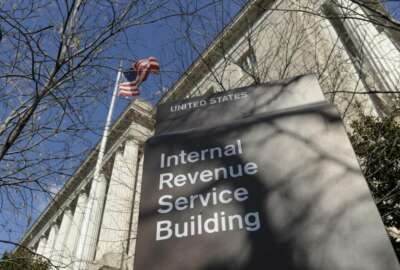
Army Corps sees convention centers as good option to build temporary hospitals
The Army Corps of Engineers is working with 114 cities to plan and build temporary hospitals to care for coronavirus patients. For cities with convention centers,...
The Army Corps of Engineers — tasked with the massive job of building temporary hospitals in potentially hundreds of American cities — has started coming to the conclusion that the convention centers that have been emptied of visitors because of the coronavirus epidemic might be the ideal setting to care for people sickened by it.
The large conference venues are certainly not the only option. The corps is also working with states and cities to convert facilities like hotels and dormitories into temporary hospitals. But convention centers have numerous advantages because of their existing infrastructure, said Lt. Gen. Todd Semonite, the Corps of Engineers’ commanding general.
“Every 10 feet, there’s a great big steel door in the floor. You open it up and in there’s all of the electrical, there’s cold water, there’s hot water and there’s a place for sewage. So you can actually do things like sinks right in the middle of the convention center to be able to make that happen,” he told reporters Friday. “The convention center model is a pretty good model.”
In addition, they come with a workforce that already knows how to convert the facilities they work in into just about any conceivable configuration. And employees like the ones at the Javits convention center in New York, where the corps is building its first convention center-based hospital, are largely idle because of widespread event cancellations.
“I went through with the Javits team yesterday, and I was amazed at the flexibility,” Semonite said. These people do 171 events a year from car shows to boat shows. They have down in their basement all kinds of wall panels, they can make almost any kind of configurations. The nice thing is, I don’t have to bring all this stuff in with other contractors — they have the majority of it. They have a massive workforce, and we can put them back to work.”
As of now, the corps — operating under the auspices of the Federal Emergency Management Agency — is working with 114 cities to identify appropriate sites to convert into health care facilities. And local authorities’ preferred approaches vary dramatically. Some intend to offload patients who haven’t been infected with coronavirus into the temporary hospitals; others plan to use them exclusively for COVID-19 patients; some are planning for some of both.
In areas without convention centers, like smaller cities, hotel-type settings likely make sense, Semonite said. In any event, the facilities need to be able to get up and running quickly, so the corps’ regional leaders have been reaching out directly to mayors in the hardest-hit areas to find out what they’re already planning, and what they need.
“Somebody once said, ‘let’s go build a hospital in the middle of a parking lot,’” he said. “But you can’t do that in two or three weeks — and we don’t have any more time than two or three weeks.”
Hotels have advantages of their own. Aside from being more comfortable for patients than larger, more open facilities, they’re also easier to convert into negative pressure rooms to aid in breathing for people with COVID-19.
But Semonite said the corps now thinks it can solve that challenge in convention centers as well. It’s beginning to work through the problem at the massive McCormick Place Convention Center in Chicago.
For that site, FEMA authorized $75 million in funding to convert three of the meeting halls into hospital facilities for various uses. Together, they’ll house 3,000 beds, and be divided by the criticality of patients’ health needs.
The air pressure in the entire facility will be lowered, but in Hall B — the one where the most serious COVID cases will be handled — the corps is also looking at installing beds into military shipping containers, where pressure can be contained to an even greater degree.
“Now, is it one-person? Is it six-person? We’re working through that,” Semonite said. “I did not think we could meet the COVID standard in a massive big building, but my engineers are telling me we’ve got the capability to do that. I tell our guys, you have three weeks. You get as much as you can done in three weeks, and then mission’s complete. We have a very, very narrow window of opportunity. And if we don’t leverage that opportunity, we’re going to miss it.”
Copyright © 2025 Federal News Network. All rights reserved. This website is not intended for users located within the European Economic Area.
Jared Serbu is deputy editor of Federal News Network and reports on the Defense Department’s contracting, legislative, workforce and IT issues.
Follow @jserbuWFED






